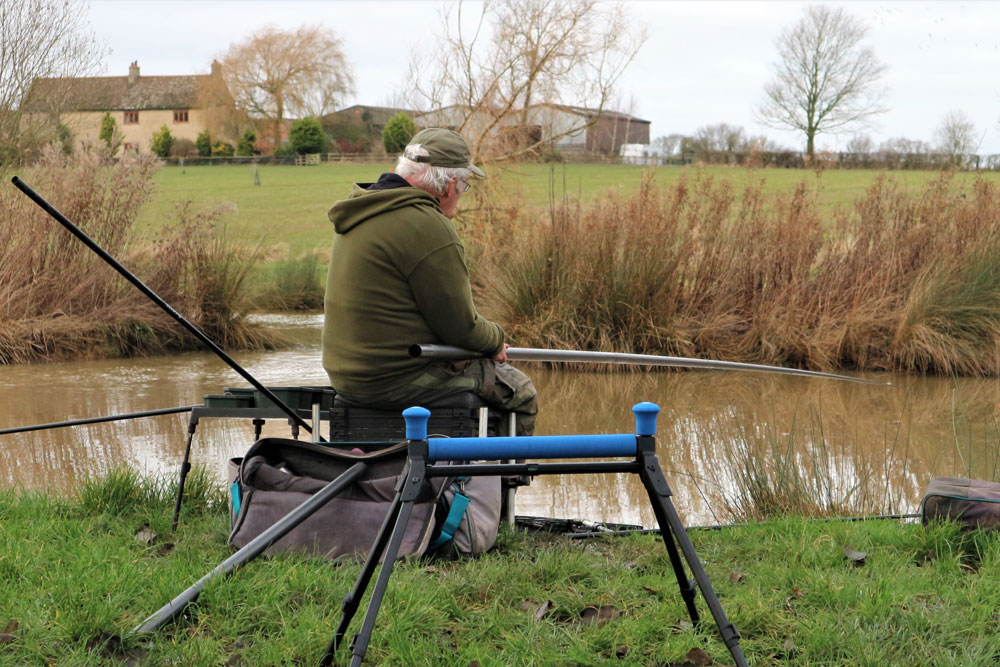Pole Fishing Essentials – Top Tips For Pole Fishing
Dave Coster highlights all the important accessories that make pole fishing work optimally.
The Basics
Poles let you present tackle in a tightly controlled manner, allowing hook baits to be manipulated in clever ways to pull extra interest, something rod and reel set-ups can’t keep pace with. That’s why the pole is so devastating under match conditions, where every ounce counts, and speed is essential. Keeping busy like this can be just as rewarding when pleasure fishing, aiming to maximise the catch potential from every type of swim you encounter. But it’s imperative to note that poles only work efficiently, providing the accessories that go with them are right for the task. This particularly applies to smaller items like PTFE bushes, connectors, base bungs, puller systems and joint savers. Larger accessories like pole rollers also play a vital part in keeping everything smooth running. Then there’s the right gauge and type of pole elastic to consider, which is equally important.
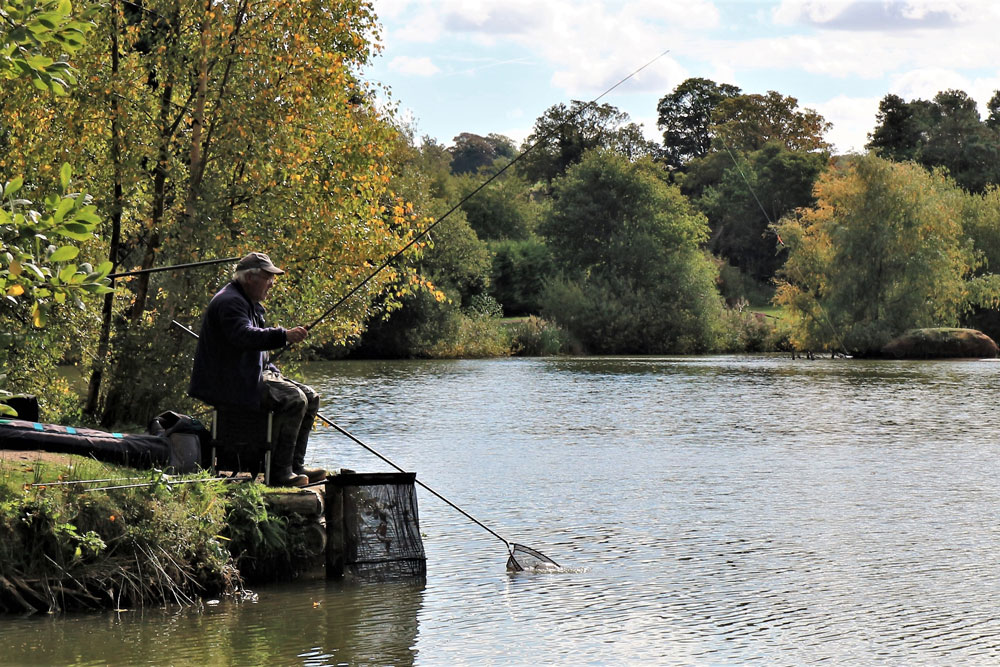
Storage Solutions
Rod tubes are often used for storing spare pole sections, but you can only get a few complete top kits in each one, which results in having to lug around a big bundle in your holdall. This takes up too much space, so top kit cases have become popular. They allow plenty of top two, three and four kits to be stored neatly in streamlined luggage that slots inside your main holdall without overfilling it. Top kit cases have hard shells and are robust, normally roomy enough to house spare number 3, 4 and 5 sections. Having most of your top sections and spares in one place makes it easier to find what you want. A rod tube can still come in handy for storing good numbers of lighter and slimmer elasticated top two kits, again making it simple to find the ones you need. The important aspect is safely storing spare pole sections in a well-organised manner.
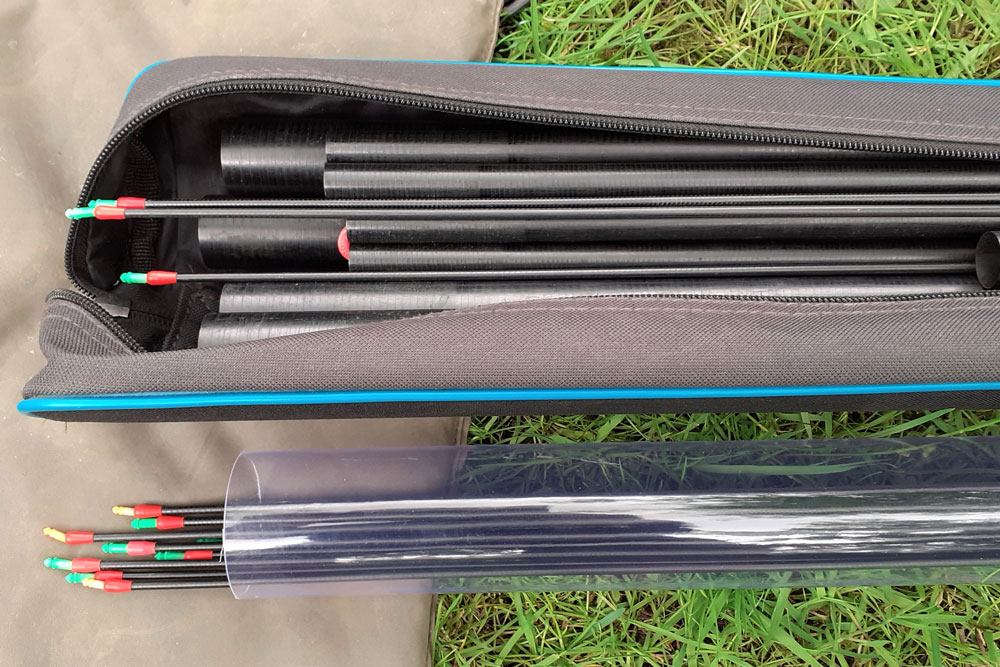
Joint Care
Joint protectors, or savers, prevent pole sections from clashing and getting damaged. They reduce wear and tear on the most heavily used joints, especially where top kits are connected. I prefer the EVA type, although finding all the right sizes can be hard work. I fit all upper and middle pole section joints with protectors because they see the busiest usage. I’ve also kitted out my margin poles with them, which improves performance and helps absorb plenty of punishment. Base caps are yet another form of protection for a pole’s lower butt sections to prevent damage if they accidentally clash into anything or come into contact with the ground. These protectors do a reasonable job, but I prefer half-butt extensions with my Cadence CP2000 Competition Pole. They are extremely robust, preventing elbow damage to more expensive lower sections.
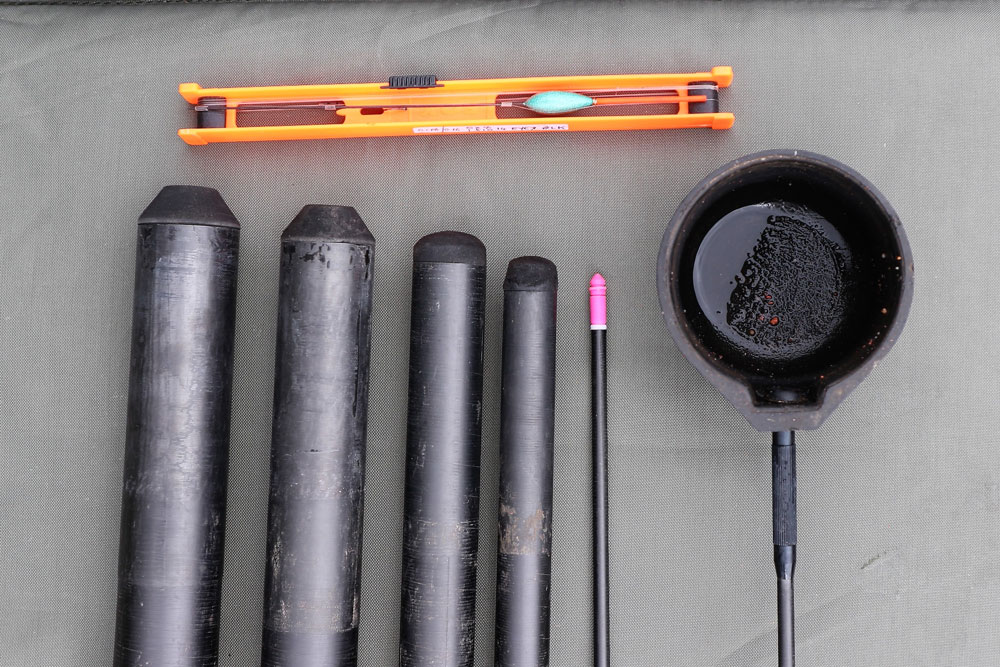
Smooth Running
Quality poles are expensive, although less so if you look at Cadence prices! A sensible way to extend their lifespan is to keep everything running smoothly by using quality pole rollers. Apart from keeping your pole clean by having it elevated, there’s less risk of any damage by preventing lower sections from scraping across the hard ground or hitting anything. V-shaped rollers are better for high set usage, particularly when navigating your pole over obstacles like tall banks behind. My V-roller has a tripod with telescopic legs and an adjustable central rod. This allows an amazing variety of heights to be achieved, which is vital when fishing awkward swims. A single roller is okay if you are only breaking down a few sections or if there is a smooth grassy area behind, which lower butt sections can gently slide over once they have travelled past the roller.
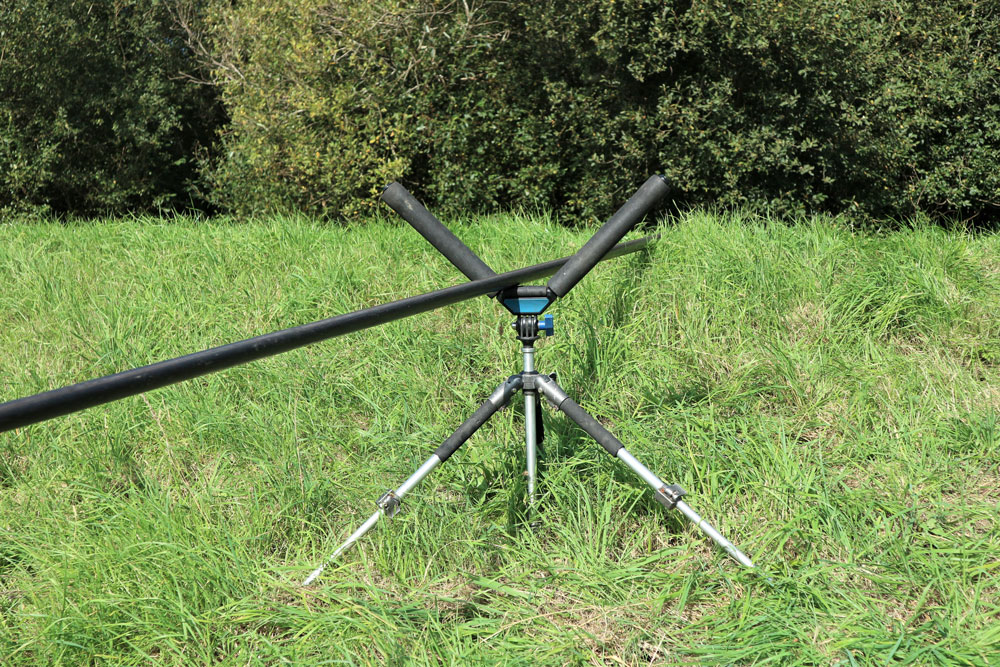
Doubling Up
Flatbed rollers perform best when banks are less cluttered with obstacles and not so high. Most anglers use two, keeping unshipped pole sections completely suspended off the ground. I try to position double rollers so that sections can’t drift anywhere, also having them set at an angle, so I can manoeuvre the pole sideways before unshipping it. This is important because I want to gently steer hooked fish away from the feed area before bringing everything back. If something big and lively kites up to the surface, I don’t want it to disturb the main catching spot. On busy venues with many passers-by, I position rollers close to the water’s edge and bring the pole around further before unshipping. This avoids speeding bikers and joggers, which can be a hazard on canal towpaths. Putting extra thought into setting up rollers makes sessions run better.
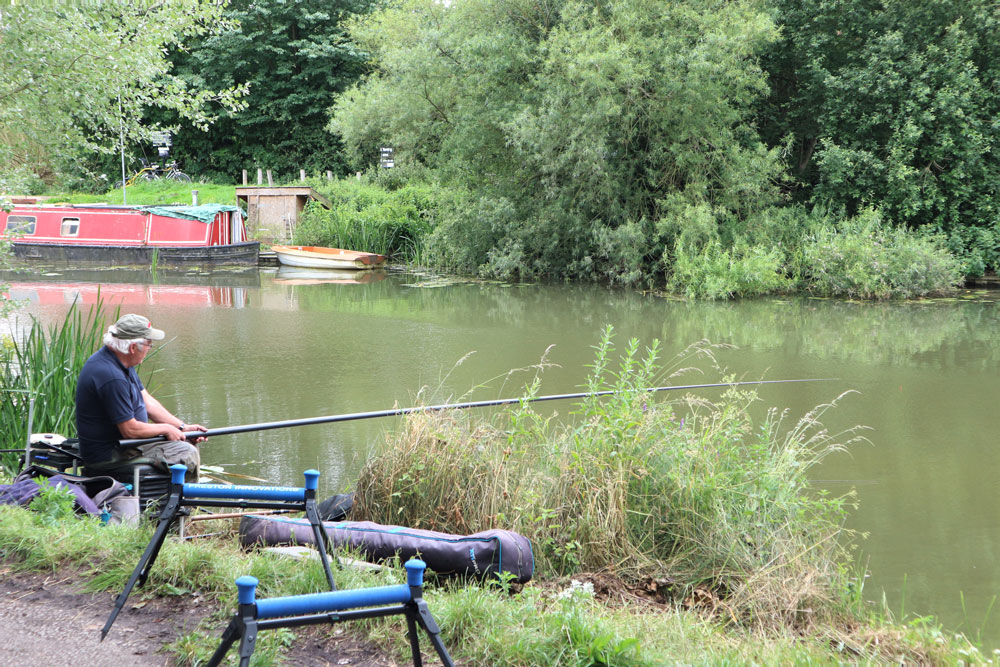
Elastics
The two main types of modern pole elastics are hybrid and hollow. I’m a big fan of both, preferring the solid hybrid version for light to medium-strength rigs and hollow for big fish applications. I’ve been particularly impressed with the thinner gauges of hybrid latex when combined with lighter lines and finer wire hooks. This stuff stretches so much further than anything else without ever seeming to want to bottom out. I also prefer this option in my match top kits because it’s thinner and lighter, so it doesn’t make them sag. I don’t like to cut match top sections back too much because if they retain the ability to bend in unison with the shock absorber, you get more control and a better feel factor. Edge Tackle Elastics provide you with generous 6m lengths in resealable bags, which equates to kitting out as many as 4 x 1.5m kits, 3 x 2m kits, or 2 x 3m kits. That’s great value!
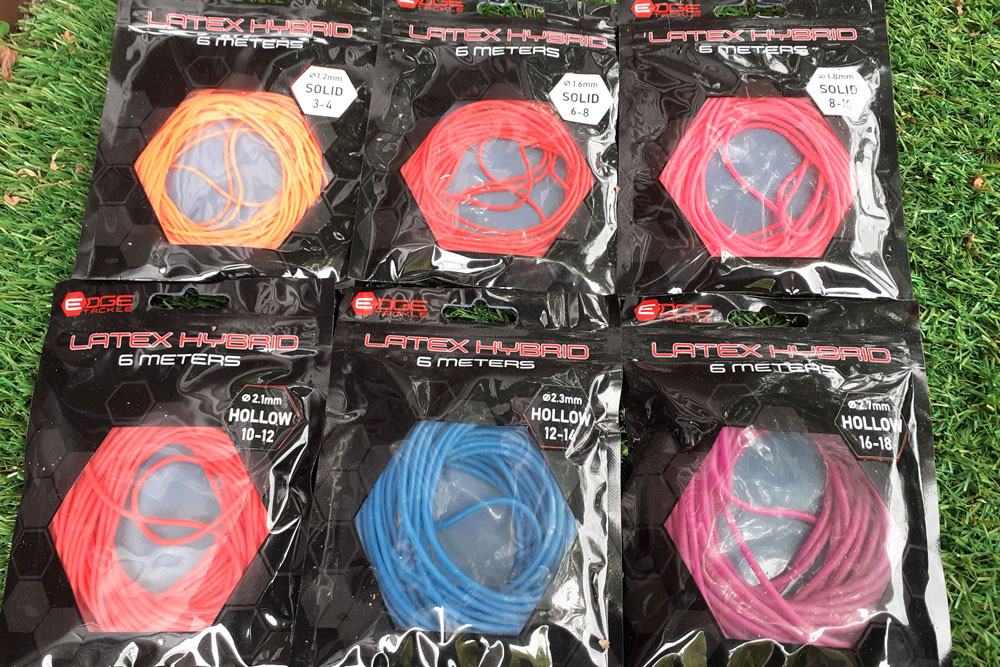
-
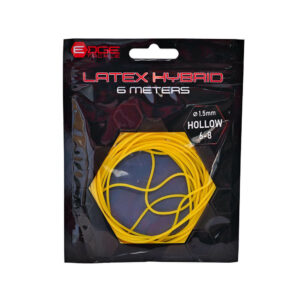 Latex Hybrid Hollow£7.99
Latex Hybrid Hollow£7.99 -
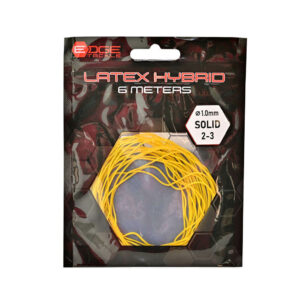 Latex Hybrid Solid£6.99
Latex Hybrid Solid£6.99
Bushes
The inside diameter of a PTFE bush needs to be slightly bigger than the elastic gauge being used. If the inner bore is too wide, an over-large elastic connector will be required to stop it from jamming in the bush or completely disappearing inside the pole’s top section. Big connectors look ungainly and are more tangle prone, while smaller connectors are neater and cause less resistance. I prefer to use external bushes for most pole elastic diameters, only switching to internal designs for thicker hollow shock absorbers. In the latter instance, internals fit more neatly, while large diameter externals are bulky, risking line above the float snagging back around them. Most external bushes are colour coded, which helps to find the right top kit for the job. This is less important with internal PTFE bushes, where a colour-coded connector can be used to identify the elastic it’s fitted to.
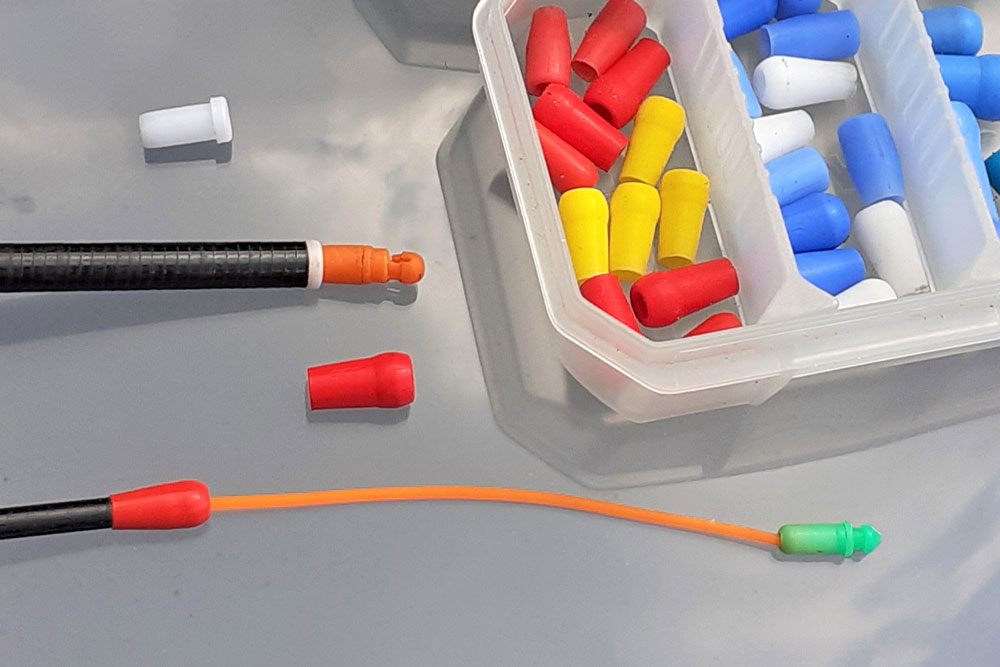
Connectors
Dacron elastic connectors are trendy now, making me chuckle because I used something similar over 30 years ago. I’ve since returned to plastic ones. The latter work fine if you use the smallest size you can get away with. Bumping syndrome, which people worry about when striking, only happens if you use over-large connectors in relation to the elastic diameter. I find plastic connectors neater and less fiddly, providing the design in question clicks together and locks positively. Drennan ones are best, in my opinion, because many other types are less secure, risking losing the rig. I don’t use Dacron versions because it’s fiddly having to loop rigs onto them, especially forming double loops, so the tackle releases more easily. With light line rigs, it can be tricky to remove them when you pack away, especially with cold and wet fingers.
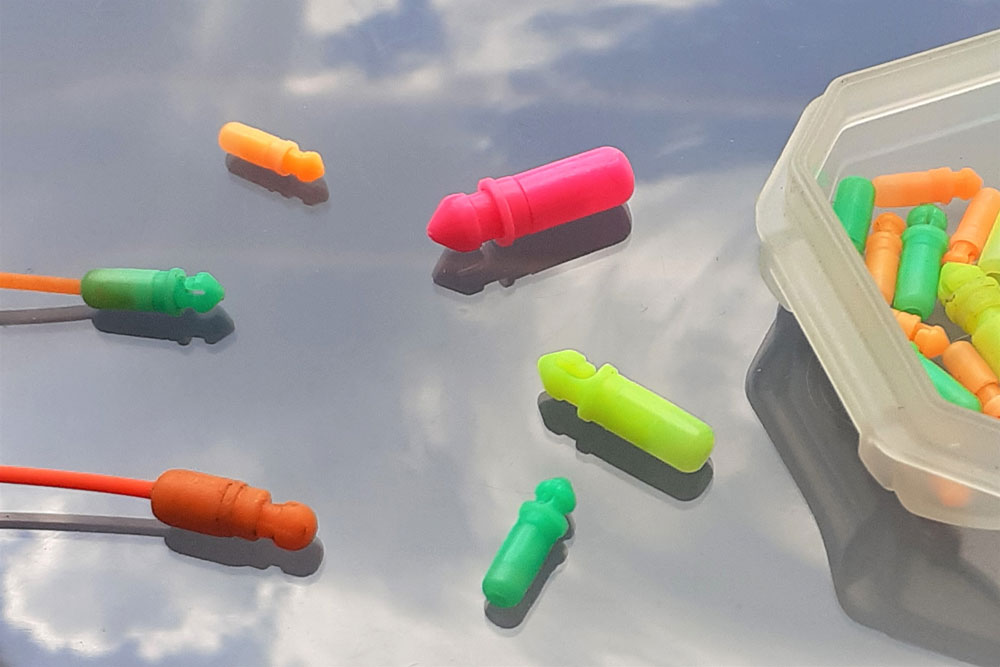
Bungs
For all my top kits that don’t have puller systems fitted, I use a mixture of simple base bungs and winder bungs. The most basic type is combined with fine elastics, which rarely need tensioning up. The reason for this is I double up and twist the last 10 cm of elastic just above the bung, which, combined with using a good lubricant, prevents the shock absorber from ever wanting to droop out of the pole. I do, however, use winder bungs with elastics that are employed in extra deep water, where tensioning the shock absorber up helps to connect more positively with bites. Winder bungs shouldn’t have too much stored on them; otherwise, top kits can sag with the extra weight. As for elastic lubricant, I use a cheap hair conditioner from a pound shop, lightly diluted with water. A few drops keep hollow or solid elastic, smooth running and nicely tensioned all session.
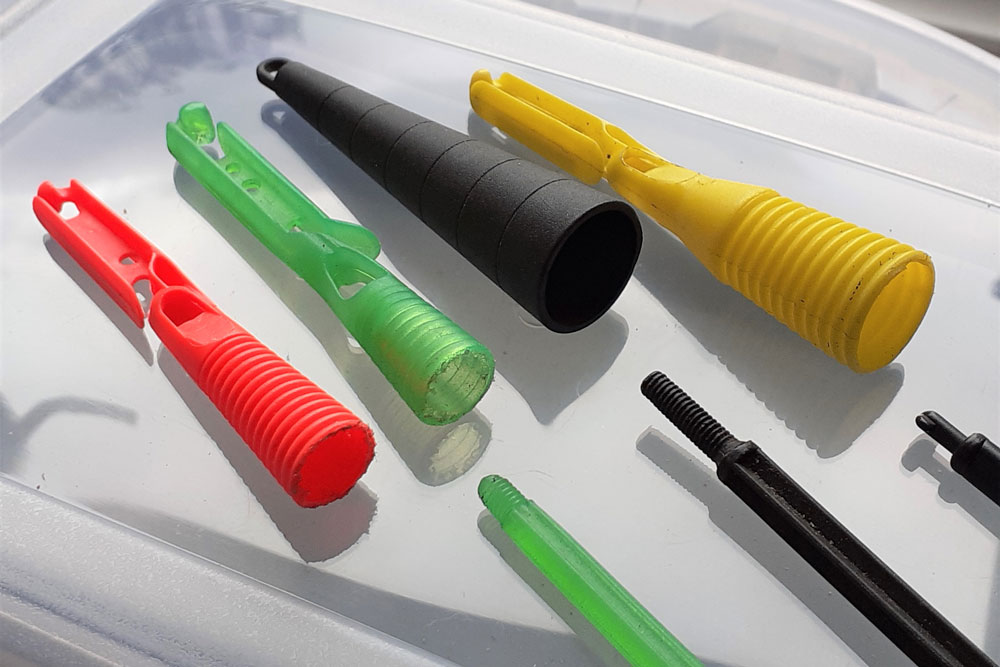
Elastic Protectors
Elastic threaded-through take-apart top two power kits can wear prematurely when stored away due to regular movement in transit. This might result in the shock absorber snapping unexpectedly while playing a good fish. These simple horseshoe-shaped protectors prevent elastic from getting chafed, where it would otherwise come into contact with the sharp edges of broken-down pole sections. Risking damaging pole elastics, which can cost over a tenner for some makes, is plain daft. These protectors also prevent elastics from getting kinked, which doesn’t help in keeping them smooth running. Protectors help to clamp broken-down pole sections together as well, which keeps them from rattling about on the move, again reducing the chances of anything getting damaged. I particularly like longer designs that grip better, but they are extremely hard to source.
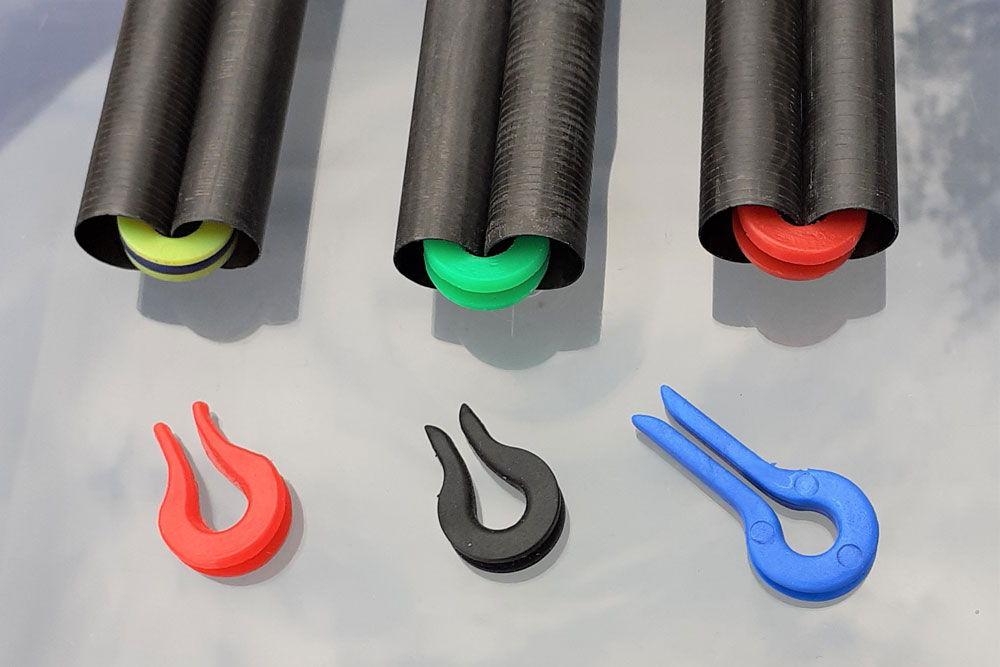
Mini Pullers
Before puller bungs and side bushes, it was common to play big fish on the pole with quite a few sections extended in the air due to so much elastic coming into play. This occasionally resulted in expensive middle sections becoming overburdened and breaking. Puller systems allow you to quickly break down to stronger and shorter top two or three-section kits, where you can control how much elastic is outside the pole. This helps land big fish much faster, keeping expensive lower pole sections out of the way. I’ve improvised a similar system with some of my match top kits that are fitted with quite thin gauge hybrid elastics. Since using mini pullers, I’ve landed many bonus fish on light tackle. After hooking big intruders on scaled-down rigs, instead of playing them several pegs away, a puller kit helps to coax them back with far less fuss.
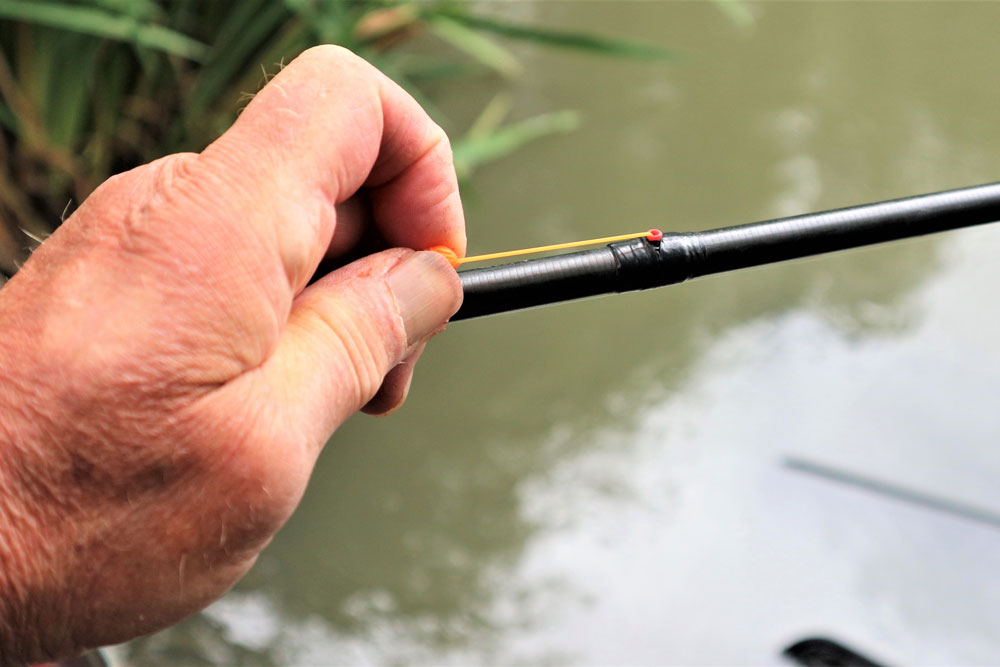
Personal Touches
Although I often use two pole rollers, I dislike cluttering my fishing position too much. I rarely surround myself with numerous bait trays and accessory arms. Keeping busy with a pole requires plenty of room to move. Apart from pole rollers, a simple free-standing bait table is often enough for me. I position this close to my seat box so there’s a gap for my landing net handle to slot in. I keep spare top kits shielded from passers-by, placing them close to the water in front of my rod holdall. A roost comes in handy over rough or overgrown banks or when fishing out in the water. But generally, I don’t want to be fishing from what looks like an oil rig when I bring my pole into play. This is all down to personal preference, probably due to my canal fishing background, which heavily influenced keeping everything neat and tidy.
